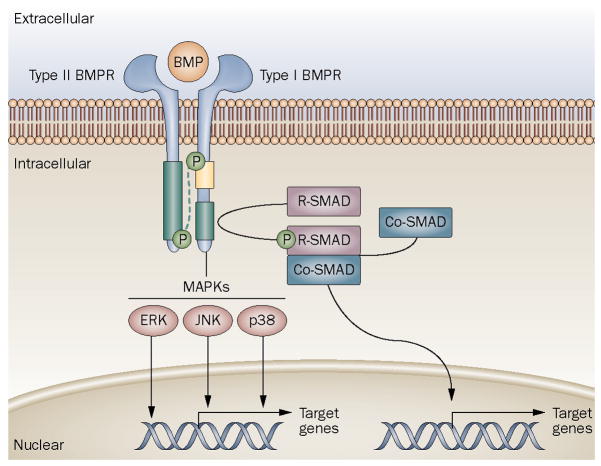Figure 2.
Generalized schematic of the BMP signaling pathway.
Type I and type II BMP receptors span the cell membrane and bind extracellular BMP ligand. Ligand binding to receptor complexes activates signaling through type II receptor phosphorylation of the type I receptor at the GS domain. Type I receptor phsophorylation is accompanied by reduced GS binding by proteins, such as FKBP1A, that regulate receptor signaling in the absence of ligand binding. Activated type I receptor phosphorylates cytoplasmic signal transduction proteins such as R-SMADs and MAPKs, which in turn, directly or indirectly regulate transcription of target genes in the nucleus.
[Reprinted from Shore and Kaplan, Nature Reviews Rheumatology 2010, 6,518–527.]

